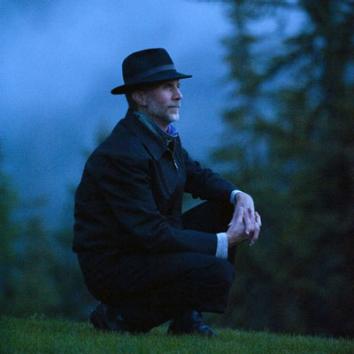Where Do I Start With John Luther Adams?

Courtesy of the composer.
I owe two of the most exceptional listening experiences of my life to John Luther Adams. The first found me wandering around Morningside Park in upper Manhattan one early summer evening, moving placidly from one ethereal sound constellation to another in a manner not unlike passing through gently hovering clouds of butterflies. This music, I should note, consisted as much of children’s laughter and sizzling meat as it did glockenspiels, maracas, and blown conch shells. The second encounter took place in a darkened theater: A percussionist sat cross-legged in front of a giant gong and slowly, methodically coaxed from the ancient alloy resonances that shook both space and soul.
I’m anticipating another exceptional experience in May when the Seattle Symphony brings Adams’ piece Become Ocean to Carnegie Hall, not least because the piece just earned the 61-year-old composer a Pulitzer Prize. Seattle only just premiered the work last summer, and unfortunately, a recording is not yet available. However, you owe it to yourself to prepare for its eventual arrival by immersing yourself—and that is the right verb—in Adams’ catalog.
New Yorker classical critic Alex Ross has described Adams—not to be confused with John Adams of Nixon in China and Short Ride in a Fast Machine fame (though the two are friendly)—as “perhaps the chief standard-bearer of American experimental music, of the tradition of solitary sonic tinkering that began on the West Coast almost a century ago and gained new strength after the Second World War, when John Cage and Morton Feldman created supreme abstractions in musical form.” That, in case you didn’t catch it, is high praise indeed—but it’s well-earned. To my ear, Adams’ scores are a perfect distillation of the best qualities of the West Coast ethos: the humaneness of Terry Riley’s In C, the vitality of Reich’s vocal emulations, the contented thrift of Glass’ vocabulary, and the commitment to curiosity and nuance of Cage’s 4’33”.
But what does this music sound like? For Become Ocean, a 42-minute piece for orchestra, we’ll have to defer to Ross’ review, which characterizes the work as almost Romantic in weight, “tonally centered, almost to the point of lushness.” Structurally, it comprises “three huge crescendos, evenly spaced over the three-quarter-hour span,” which “suggest a tidal surge washing over all barriers.” Ross also reveals that Ocean’s 630 measures of music reverse on themselves halfway through, meaning that the piece is one massive palindrome. (How appropriate then for it to win this week.)
More generally, Adams’ music might be called agoraphilic. Some works, like Inuksuit (the park piece I mentioned above), are designed or otherwise encouraged to take place outside, mixing written notes with the melodies of the natural environment. The composer has drawn much of his inspiration from the Alaskan landscape where he lives, and his preoccupation with climate change and other consequences of humanity’s lack of harmony with nature shows up in his work consistently, such as in a note for Become Ocean: “Life on this earth first emerged from the sea. As the polar ice melts and sea level rises, we humans find ourselves facing the prospect that once again we may quite literally become ocean.”
Not all of Adams’ work is so melancholic, but everything of his that I’ve heard does insist that the listener take time to reflect, to breathe. The composer asks that we linger on the complexities of gong overtones, as in Roar, or willingly drown in a rippling abyss of orchestral colors, as in Dark Waves. This is music that tends to envelope first and take analytical questions later. But above all, it is generous: With Adams, you are as welcome to get baked as you are to search for palindromes below the shimmering surface.
Inuksuit (2009)
Roar (from The Mathematics of Resonant Bodies, 2002)
Dark Waves (2007)
songbirdsong (1974-1980)
The Immeasurable Space of Tones (1998-2001)
